The name of this beautiful flower that originates from a marshy soil in South Africa comes from the Greek word ‘Καλά’ that means ‘good, beautiful’. Despite that name, Calla lily (Zantedeschia aethiopica) is not really a lily but a plant from the Araceae family. A Swedish botanist mistakenly cataloged it as a lily in the 18th century, and that name has remained until today.
We know that Calla lily was depicted for the first time in 1664 in a Royal Garden of Paris illustration. In the US, it became popular in the 20th century. This funnel-like perennial flower can be white (it is the most fragrant variety), cream, yellow, orange, pink, fuchsia, and red. It is so gorgeous that many brides choose this particular flower for their wedding bouquets.
Calla Lily Varieties
This perennial flower grows from bulbous roots and blooms in late spring. You can plant it in a container or in your garden, but be prepared that it is pretty challenging plants to care for. Also, don’t let this beauty to fool you. This symbol of purity is extremely toxic when ingested.
The most popular types of Calla lilies are:
- Calla palustris – This popular house plant is a domestic flower in cold regions of the Northern Hemisphere.
- Zantedeschia – Native to South Africa. Nowadays it is grown as a house plant.
- Zantedeschia aethiopica (calla lily) – Native to South Africa. It can be easily grown in the garden.
There are a lot of different varieties of Zantedeschia, and they can be roughly classified as ‘hardy’ and ‘tender’ depending on temperatures they can survive. Zantedeschia aethiopica is a hardy variety of this plant, and it can survive unbelievable temperatures of -13 F (-25 C).
Some of my favorite varieties of this mesmerizing plant are:
1. Hardy forms
- Zantedeschia Cantor

The deep purple (almost black) Calla is probably the most popular variety of this beautiful flower. These gorgeous and mysterious plants require humus-rich and moist soil, but, unlike other types, they tolerate more water even at the time of flowering. Expect them to bloom between May and October.
- Zantedeschia lipstick
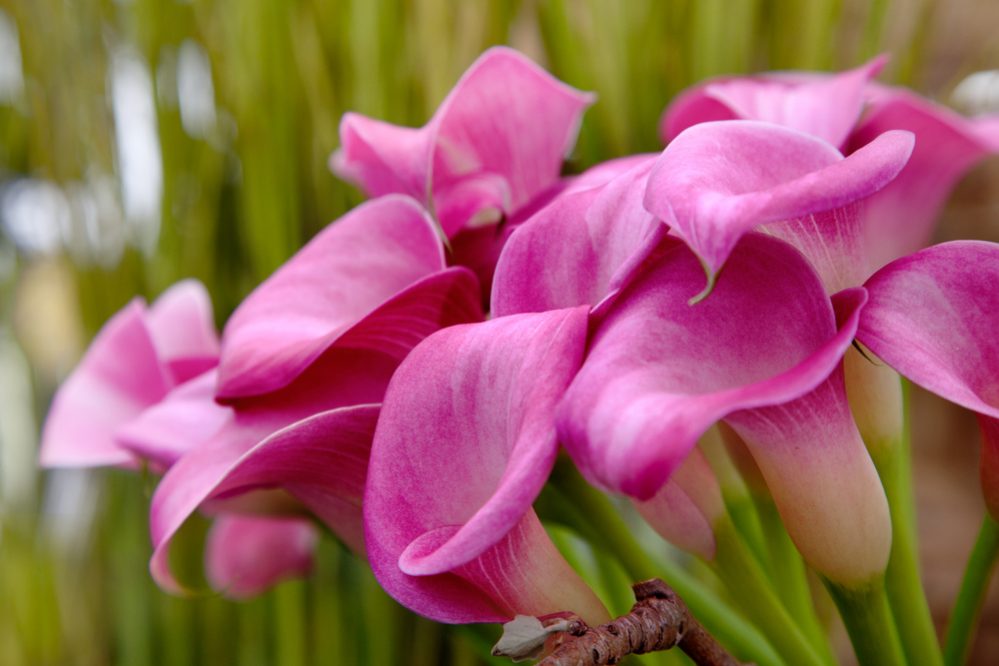
Who wouldn’t like these gentle cream flowers? Just provide humus-rich soil, enough compost, and an adequate sunny place, and they will beautify your garden between May and October.
- Zantedeschia aethiopica
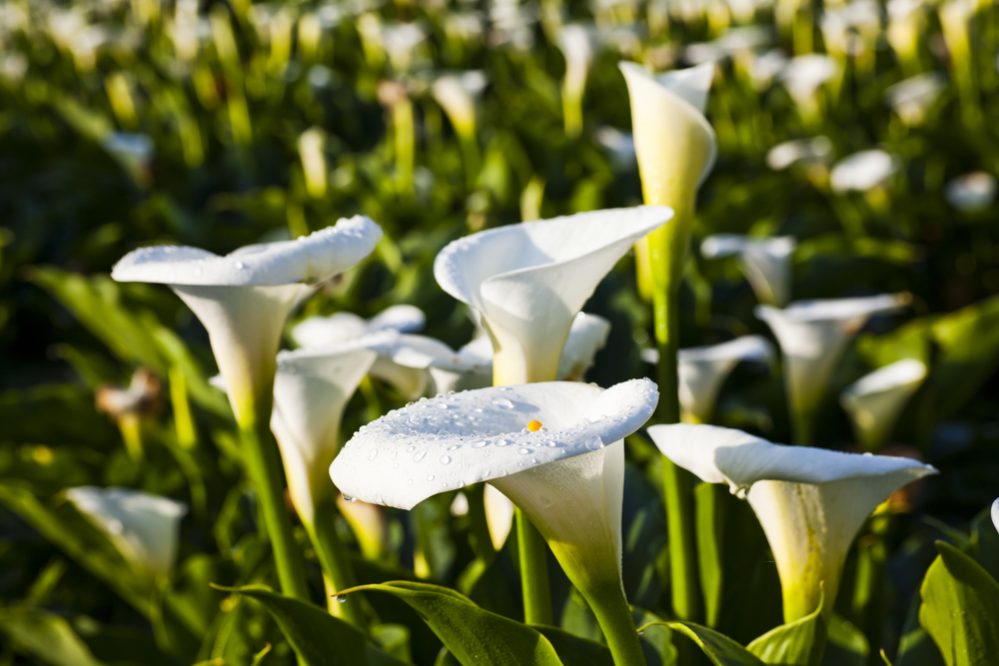
This premium variety, also known as White Arum Lily, is a gorgeous outdoor flower that flourishes from late May to June. It is hugely moisture tolerant and can grow in water garden settings. If you add extra mulch, this plant can survive outdoors in the USA.
- Zantedeschia jucunda
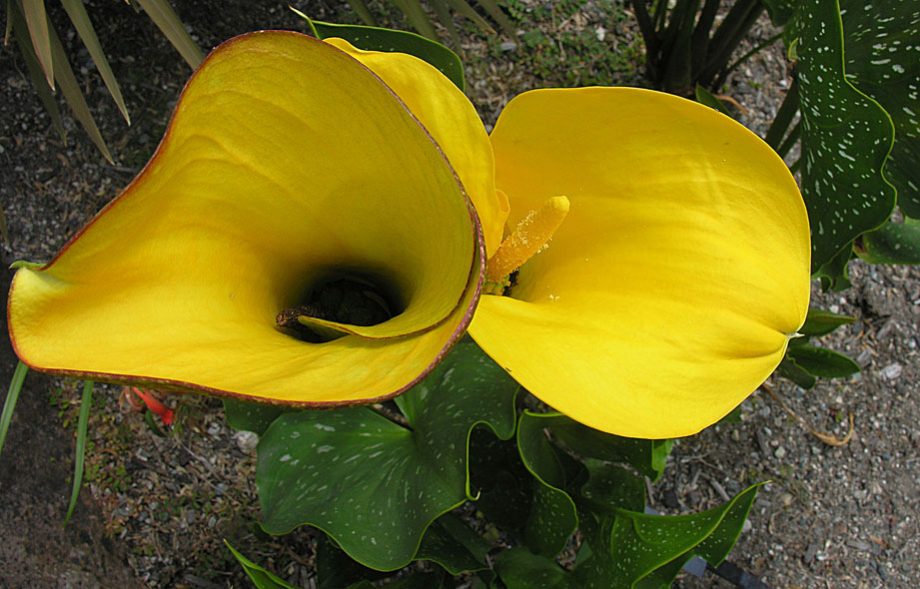
You can plant this adorable yellow arum in the well-drained soil, and it will flourish from November to January in the rocky environment.
2. Tender forms
- Zantedeschia elliottiana
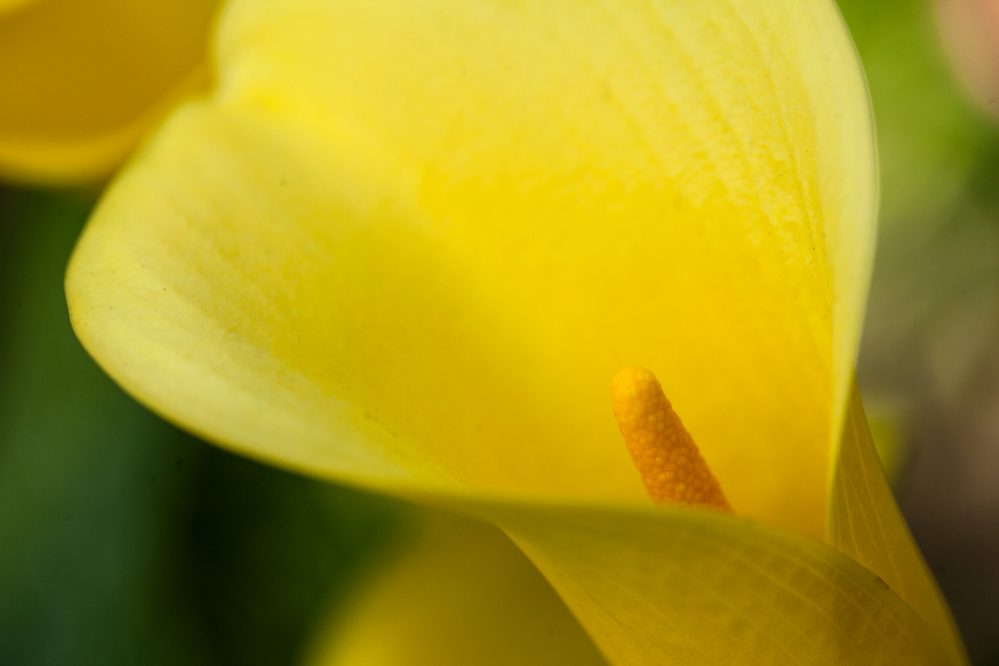
Unfortunately, you can’t successfully plant this hybrid origin variety outdoors, but you may find a nice place at your porch or balcony for it.
- Zantedeschia rehmannii
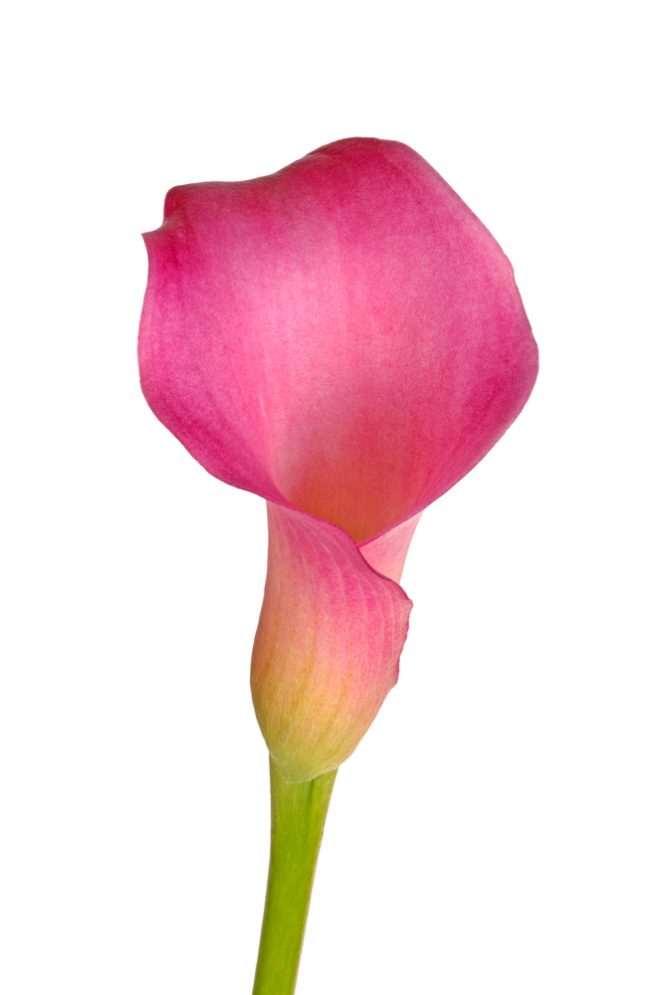
Pink Calla Lily is a small to medium plant that blooms during the summer. This beauty prefers full sun and well-drained soil. Surprisingly, it doesn’t require too much attention if planted correctly.
- Zantedeschia albomaculata
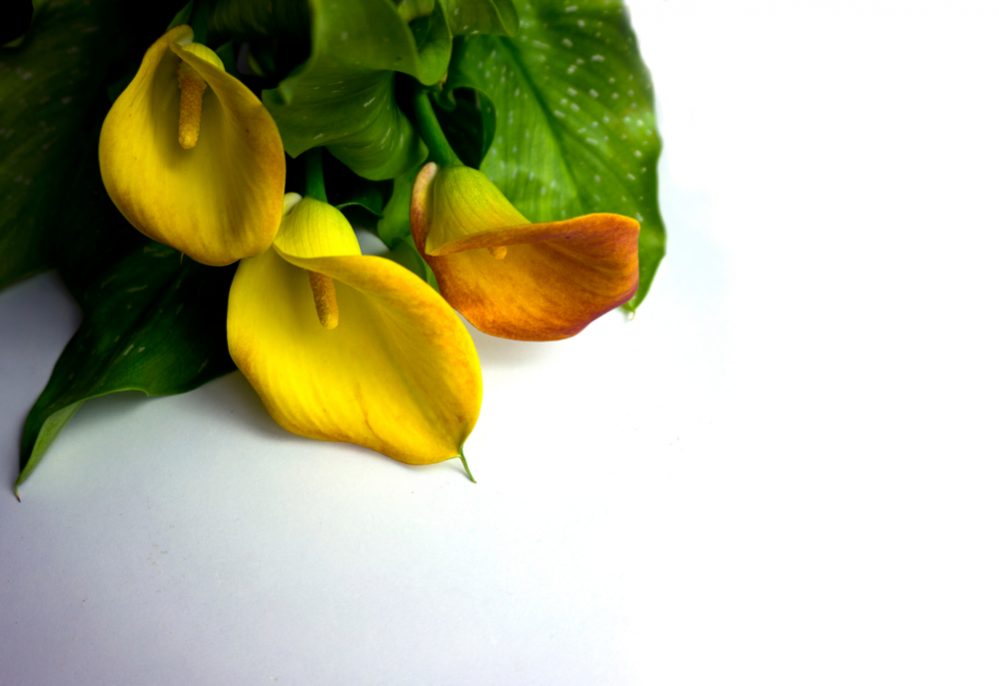
This pure white or yellow perennial flower is often desired part of large flower arrangements. You can easily recognize it by the white spotted leaves. This adaptable plant can grow in a flower border or at the edge of some water.
Why We Should Plant Calla Lilies
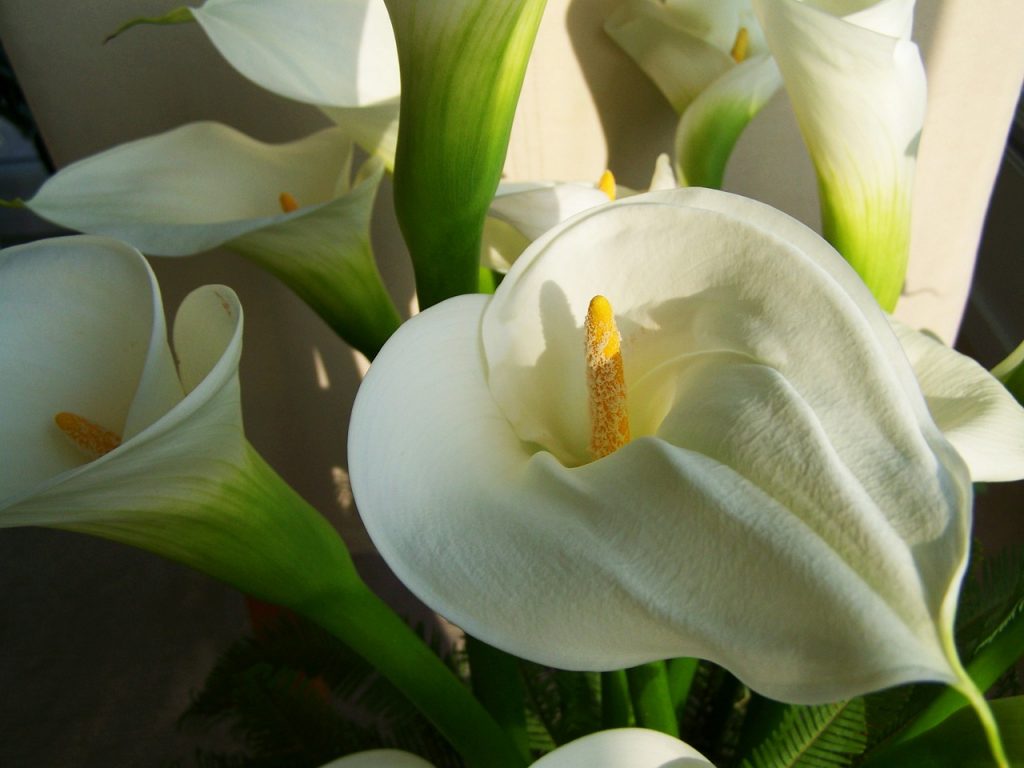
1. Attract Pollinators
These colorful, fragrant flowers are a real lure for hummingbirds and all kind of butterflies who search for nectar. If you want your garden full of these magnificent creatures, Calla lilies are a premium choice.
2. Repel rabbits and deer
These flowers are entirely deer and rabbit resistant which make them an excellent choice for an unfenced garden. Perhaps you can think about making a Calla lilies fence along your property. Why not?
3. Fill in empty space in summer
Use Calla lilies to fill empty space in your garden in early summer before other flowers flourish. Just put at least three rhizomes in the same hole between other plants, and enjoy fireworks colors from the first day of the summer. The best choice is to complement your Calla Lily with Hydrangeas, Dahlia, Canna, Astilbes, Asparagus fern, and New Guinea impatiens.
Growing Calla lilies in your garden
1. Material you need
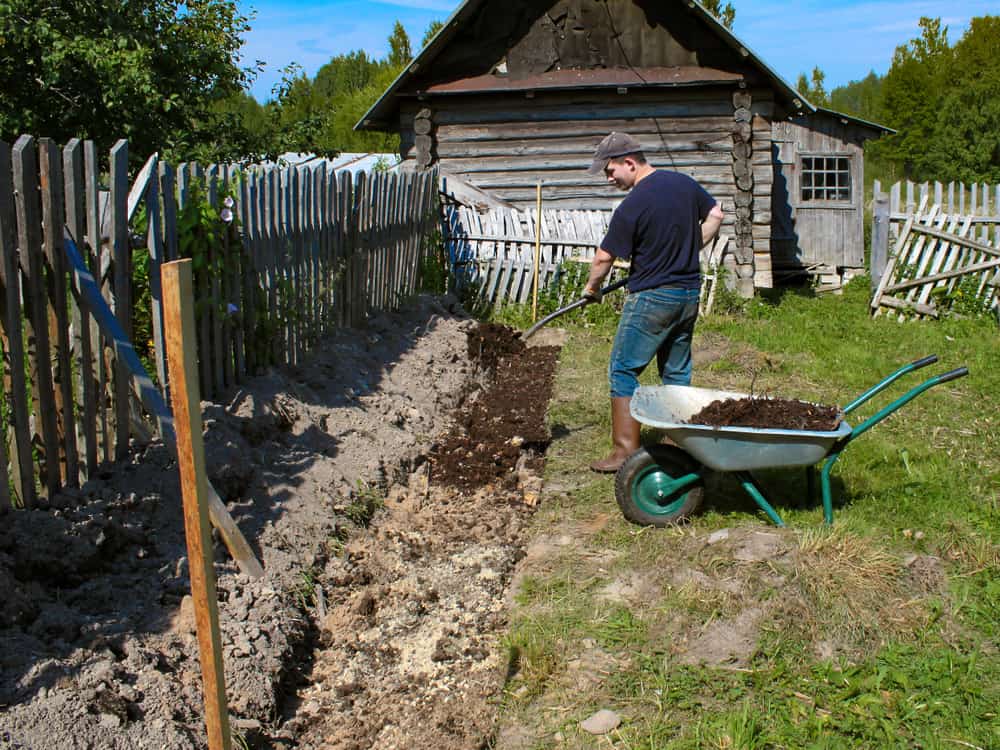
In general, you don’t need any special material for planting your Calla Lilies. Just prepare everything you usually use for seeding:
- Compost
- Sand
- Organic mulch
- Shovel
- Hand trowel
2. Location
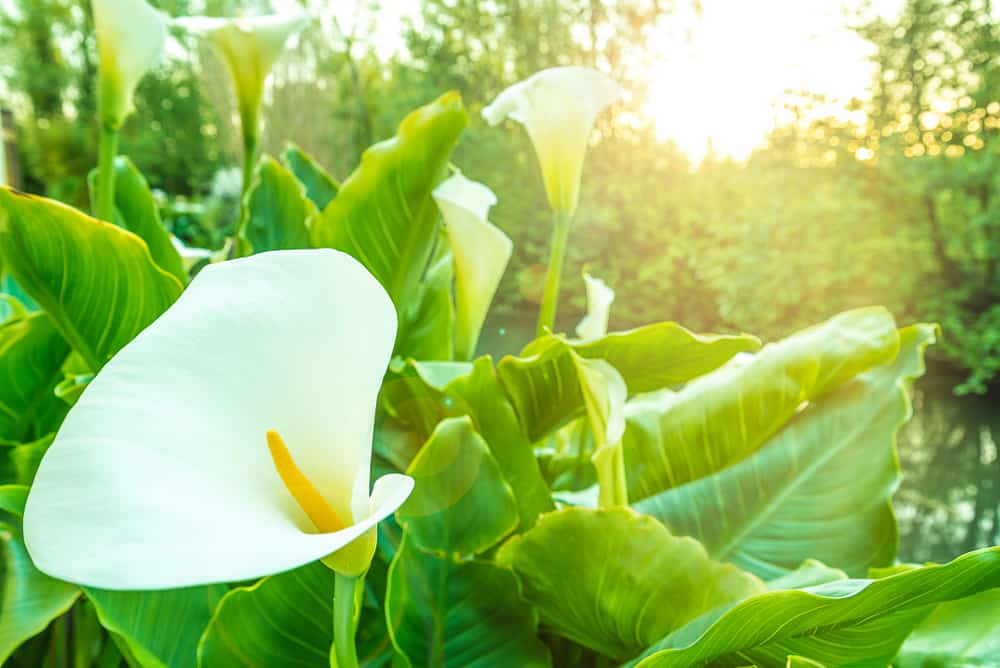
For Calla Lilies, you should find a sunny place with plenty of light. However, these flowers need to be protected from the full sun throughout the day. Try to locate them at the position with afternoon shade. Also, since Callas don’t like being directly exposed to a large amount of rain, you should try to find a protected location for them if it is possible.
3. Soil
Callas can be very picky and require well-drained, but continuously moist soil. If you have any stream, pond, or any other artificial wet soil in your garden, your Callas will entirely enjoy, and you can expect constant and lush flowering in return.
4. Planting

The springtime (from March to May) is a perfect period for planting Calla lilies. After the soil warms to 60 F (15.5 C), you should select a well-drained piece of ground in your garden, dig it a little bit, and add a thin layer of compost (approximately one inch) and the same layer of sand.
Mix them with the soil, make two to four inches (5-10 cm) deep hole and put three, five, or seven bulbs in it. I really don’t know why, but you should plant odd numbers of flowers to get the best results. Try to lower the smooth side of the rhizome down while the bumpy side should be facing up.
After planting rhizome, put a thin layer of organic mulch on the top. That way you will reduce evaporation and consequential loss of water. To avoid rot, don’t water soil too much until your flower starts growing.
Just be sure that holes are at least six to twelve inches (15-30 cm) apart from each other. Take care that your Callas need soil that always stays moderately moist. In such conditions, expect them to bloom until late summer.
5. Winter protection
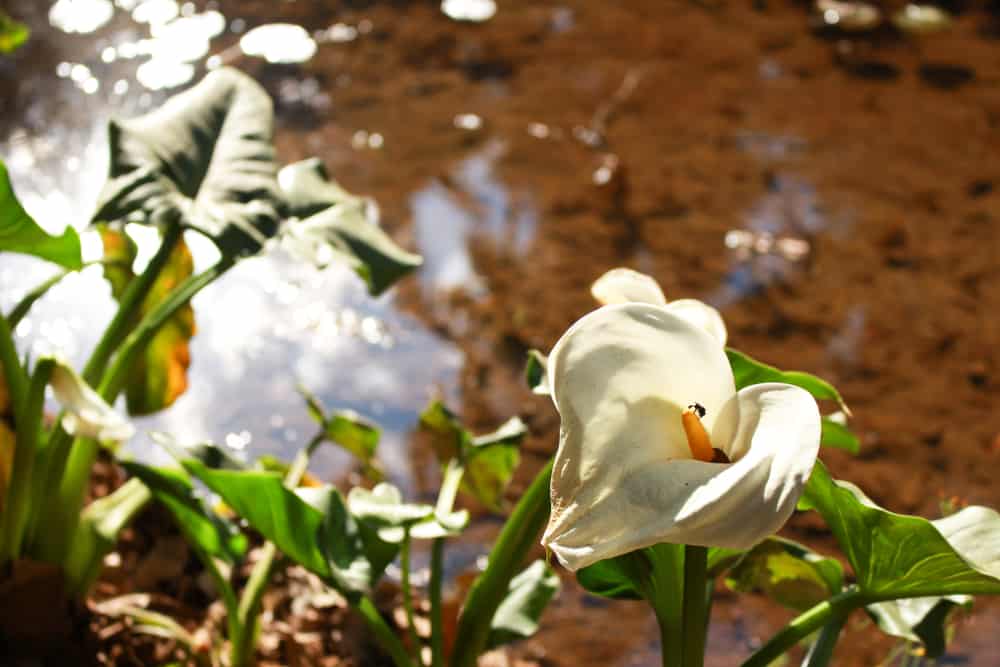
In autumn, before the appearance of frost, move your plants indoors and let them rest. If you decide to leave bulbs in the ground during winter, you should divide and replant them every few years to stimulate better growth and lush flowering.
You can also dig the rhizomes from the garden and store them into the pot in a dry room. Provide a dry place for them and take care that the temperature is not lower than 55 F (13 C). When spring comes, prepare the soil and replant Callas in the garden.
Take Care of Your Beautiful Calla Lilies
If you fulfill many demands this flower has, you will get a healthy, beautiful plant which blossoms every single year.
1. Watering
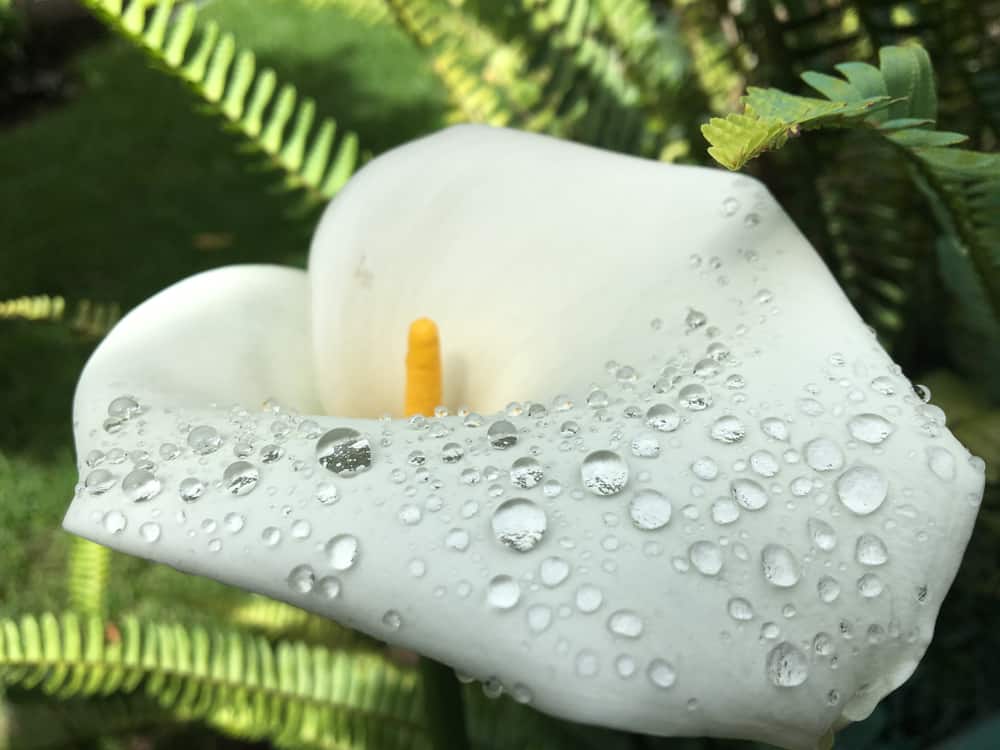
Since Calla Lily is a swamp plant and you can’t expect this flower tolerates a more extended period of drought. It requires moist soil, but not excessive watering. It would be enough to water your Callas when spotting that soil is lightly dry, but be careful and never overdo.
If you not sure how often you need to water your plants, you should make a simple test. After planting, water the soil thoroughly and pay attention to it over the next few weeks. Then, check the moisture at a depth of about one inch (2.5 cm).
If the soil is dry, you should water your flowers carefully. If not, you should wait with watering. I am pretty sure that you don’t want your lily bulbs to start rotting before they flourish.
Warning – If you notice dark leaves on your flowers, be sure that they are over-watered.
Even though Callas don’t like being directly exposed to the rain, rainwater can be an excellent solution for watering them, especially during the growth and flowering.
2. Temperatures
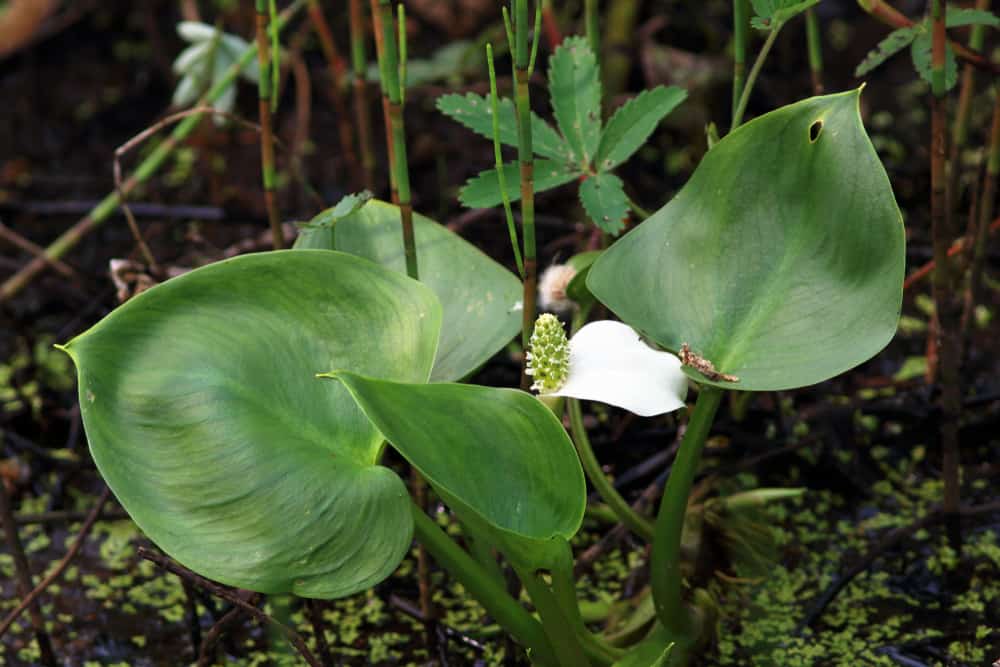
Since Callas begin to grow in autumn, try to keep them at temperatures from 50 to 60 F (10-15 C) during this period. In the growth phase, this flower likes the warmer location. Once flowering period comes, the partially shady place will be perfect for this lovely flower.
Expect ideal blooming if you live in the region where the average temperatures are not below 70 F (21 C). If you live at the colder regions, just pick out varieties that tolerate lower temperatures.
3. Fertilizing

Regularly add liquid fertilizer to the water and fertilize your Callas while blossoming in the spring and summer. Repeat the process once or twice a month until early autumn. These flowers don’t need any fertilizer when the weather becomes colder during fall and winter.
While bulbs need fertilizer more often, once your Callas bloom, you can stop fertilizing. Moreover, if you add too much fertilizer, you will notice dark tips on the plants’ leaves.
4. Trimming
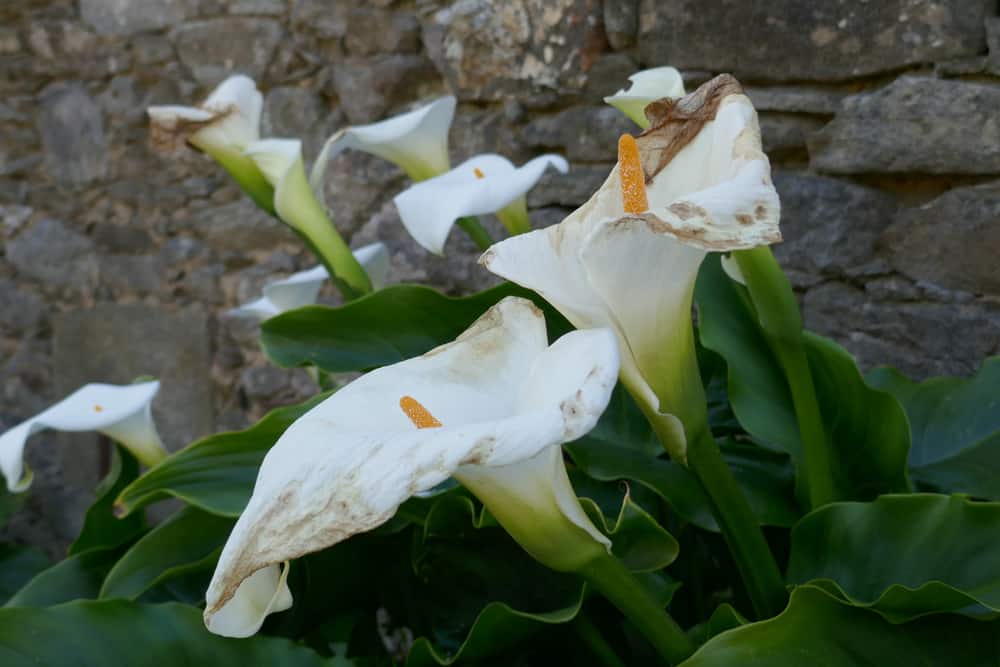
Trimming is not a big deal when you grow Callas. Just cut off yellow leaves and withered blossoms. That’s it! However, you can always put some of the blooms into a vase if you like that way.
Keep in mind that it is a better option to cut stems as close as possible to the root tube. It is also a good idea to trim your plants above the bulbs before winter rest.
Pests and Diseases and How to Fight Them
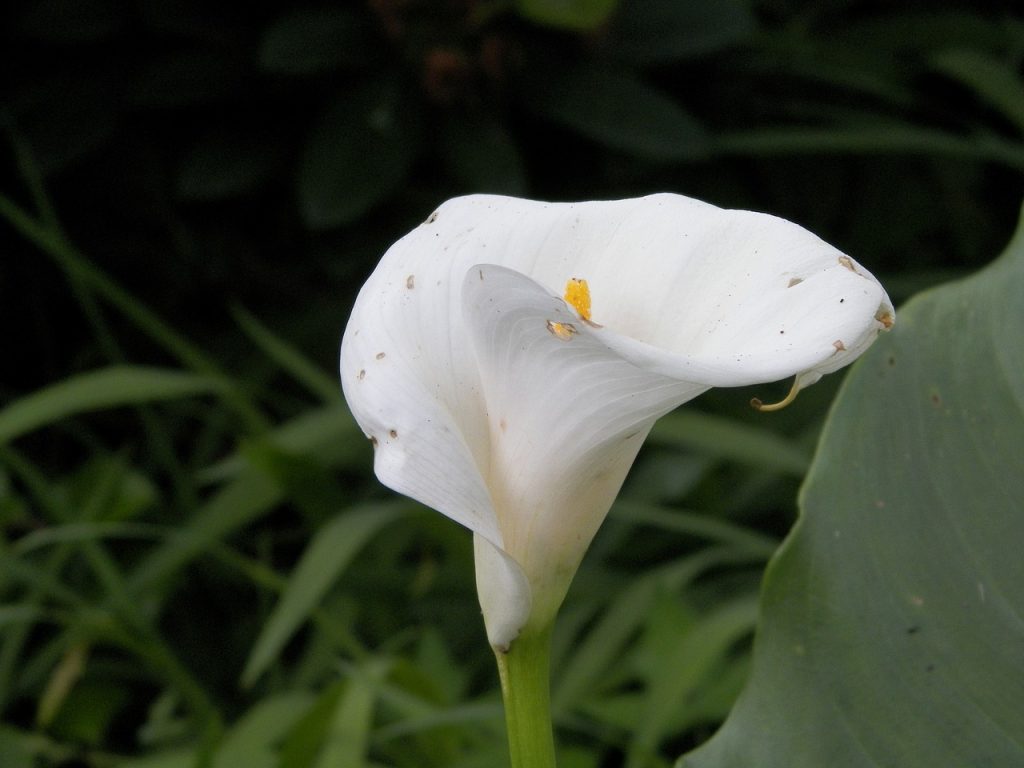
Unfortunately, Calla lilies are prone to various diseases. If you don’t treat your plants on time, you can expect severe damage. Usually, the main reasons for these conditions are over-watering and the poor quality soil.
- The ring mosaic virus – This virus causes yellow spots and stripes on the plant’s stem and foliage. Also, affected Callas can’t bloom properly. The only cure is to destroy a whole flower and prevent the spreading of the virus.
- Bacteria – They usually cause stem rot by attacking their lower parts. After spreading the infection down to the roots, your plant will definitely die. Therefore, you should apply the only possible solution – destroy every affected plant and let the others grow healthy. If you spot any unusual changes in your flowers including brown foliage, rotting, bad smelling, or the occurrence of stains on the leaves, you can be sure that something bad is a cause. Don’t hesitate to solve it right away.
- Spider mites – You can find these pests under plant’s leaves. They feed on the juices from foliage and turn the leaves to an ugly gray-yellow pile. Try to spray affected Callas with water, and repeat treatment when needed.
- Aphids – If you notice these small insects on your Callas, destroy them by using insecticidal soap or neem oil.
- Greenflies – Sometimes you will find greenflies on your flowers. This infestation is pretty usual during the winter rest. Spray your Callas with a soap dissolved in water and cut off affected parts. In severe cases, solve the problem by using insecticides.
Summary
I can’t emphasize enough how much the Callas are poisonous when ingested inadvertently. Some people can experience skin irritation, rash, and allergic reaction even if they touch this plant or when they come in contact with excreting from the leaves that contain irritants.
Try to keep your children and pets far away from this flower if you want to enjoy its beauty without any fear. If you notice symptoms such as mouth burning, tongue swelling, nausea, vomiting, or diarrhea after accidental ingestion a part of the plant, you need to contact your doctor right away.

I live in Chesnee, SC and I am having trouble with my calla lilies especially the ones I have planted in my garden that were blooming in pots. The leaves are rotting at the top of the ground. What am I doing wrong? I don’t want to loose my plants!
My grandson gave me a yellow sun club calla lily,for Mother Day. Do l plant it in the ground or in a large pot? I live in Arkansas. Will it live outside during the winter?
Can you plant calla Lily’s and roses together?
The info here is wonderful. Great work. You answered many of my problems with callas.
When planting, it is not odd numbers that are used but prime numbers. Since the middle ages, prime numbers, (2, 3, 5, 7, 11, 13, 17, 19, 23, 29, 31, 37, 41, 43, 47, etc.) which were believed to have great magic and power. Japan uses prime numbers in flower arranging, but I am not sure if they attributed the same qualities as Europe and the Middle East. A prime number is any whole number that can be divided only by itself and 1. Only 2 is an even number.
I live in KY and I have never taken my bulbs inside during winter. They stay in the ground and each year they have grown bigger and more lilies have come out bigger than the year before. I planted these 6 plants 3 years ago and each year they are more beautiful than the previous years. I’m no expert but I have never removed mine from the ground during the winter and frost. This seems to work for me and my lilie, not the rest of the garden, that’s a different story
I live in mid state of Washington. I have 2 large pots each with 2 clumps of calla white and deep pink. I bought them already in bloom, put them in plenty of room, I never saw the actual rhyzome, only a big clump of white roots. I water when top inch becomes dry, have drainage, partial sun, porch protection when needed. Soil is part miracle-grow planting soil, a little sand, some mulch too. The past week after having them about 3 weeks, I noted a few flowers just fell over. I thought a bird or something but it was rotten, I tugged gently, it was slimy leave and threw it away. I don’t know what causes this, I have had 3 different times this happening.
My calla lillies don’t produce pretty flowers – they get a large white flower looking thing that smells a bit like rotting meat – really not nice – plenty of lush foliage though
I am in the third year with a purple calla Lilly. First year I had several blooms, second year I had a few blooms but they were green. This year no blooms at all but the leaves are beautiful and have tripled in size.
I used fish emulsion and figure it is not the right fertilizer to use.
Can I get information and help? It is outside.
Leaves and petals are deformed looking. Planted on East side, no noon sun. North planted callas are doing good with afternoon sun. Why?
thank you thedailygardener for giving me wonderful information
Hi I just want to know, what will happen if I put to different colours of Cala lillies in one hole. Will it grow to two tone or will one of them die. Thank you Martie
Thanks for sharing all of your experiences!
Will Cala Lillies bloom more than once in a season when planted outside? Last year mine did not bloom, but I am sure that was because they did not have enough water. I made sure that was not an issue this year, but just wondering if I can do something to get them to bloom again?
This spring in my new home (in zone 6 Ohio), I was overjoyed to see a beautiful yellow calla lilly emerge in the foundation bed. I didn’t know what it was but after some research I was able to identify it – and was totally surprised that it lasted the winter there, but it most certainly did. This plant is quite large and has almost doubled this year. It’s on the east side of the house – up against the brick. My sister said the brick and leaves must have kept it warm enough to survive. I don’t want it to die – I feel like if it survived last winter it’s in a good place and I should leave it there. What is your opinion? Was that a fluke and I should dig it up this year??? Of course now I’m hooked and want to plant more of them…..
I have a pink calla lily that is doing great. The only problem is that the flowers do not turn pink, they are green! I would appreciate any help you can give me in how to make the green blooms pink. Thanks.
What might be causing my flowers to droop?
We planted our white calla lillies about 6 weeks ago (Sacramento, Ca) – we noticed holes in the leaves. We dont see any bugs on or around the plant. Any idea what could cause this?
We have 3 plants in a side-yard garden. While each have proliferated and bloomed well, each, one each year it seems, gets snapped off at the base by the wind (the side yard does get very windy at times). The first plant now just puts up a few leaves, less than a foot tall and no blooms. The second plant, which got sheared off at the base last year, seems to be coming back stronger, with dark green leaves but no flowers this year. The third plant, which is currently 4-5 feet tall bloomed very well this spring but was recently blown over by a recent wind storm. This plant is unique in its location as its buffered by two pots and a hedgerow at the front of the garden. I just went in and tried to tie the poor plant up and noticed that some of the thicker stems appear almost translucent-green in color and I’m wondering if I’m not doing something right which is causing the stems to become weak and break off at the base when its windy.
Thank you so much for this information. My husband got me a potted indoor calla lily a month ago. Some of the blooms have browned and died. Some are doing okay, but it seems every few days another one starts to brown. I have 2 feet from a window that gets indirect afternoon sun. I water it about 1/3 of a cup of water every other day to make sure the soil never completely dries. Am I watering too much? I really want my calla lilies to survive and come back year after year.
Ashley,
Do not water more than once or twice a week! I watered once a week and plant was just fine. I live in Toronto and we haven’t gone above 28C yet.
The calla is such a gorgeous flower. Just the sight of it inspires me to no end.
Hello, I have been given large calla lily bulbs and am told they are red.
I live in Quebec Canada zone 4b. I want to plant the bulbs outside. What would be the optimum conditions? Thanks very much for your advice and lovely site.
Elisa
In spring after last frost, you can plant them in the ground.
Because you have cold wet winter’s you must dig them up and store them.
When leaves turn yellow or you get frost dig em up. Cut leaves off at the level of the bulb. Leave the roots alone. With a soft brush remove soil from the bulbs, let them dry inside the house for a few days. They should feel like potatoes.When they dry to touch, get a old produce container place the bulbs in and wrap it with a plastic produce bag and store this in a cool not cold location like an attic, basement.
I just store my bulbs without the peat moss, etc.
Plant in spring after frost again
Enjoy
Hi Shannon, Thanks for your experience!
We repotted our lilies from the nursery and placed them on the north side of the house entrance. They aren’t producing new blooms or growth and the stem and leafs are turning brown. Is this the result of too much watering?
Yes, Too much water will hurt lilies stem and leaf.
And the reason why no new blooms is that may lack Adequate sunlight and fertilizer.
This is an extremely beautiful flower, I really like this flower but don’t know how to take care of it to make beautiful flowers like you.
I’m trying to find out when and where to plant them
My Arums are black (deep purple) on the top but green on the underside of the flower with the arrow shaped leaves. They bloom in the winter. I live in Phoenix Ariz
Can you tell me why my cala lilies are not opening wide. I have had them for approx. 3wks and they are in the same pot. What am I doing wrong?
You should take care of the temperature and sunlight.